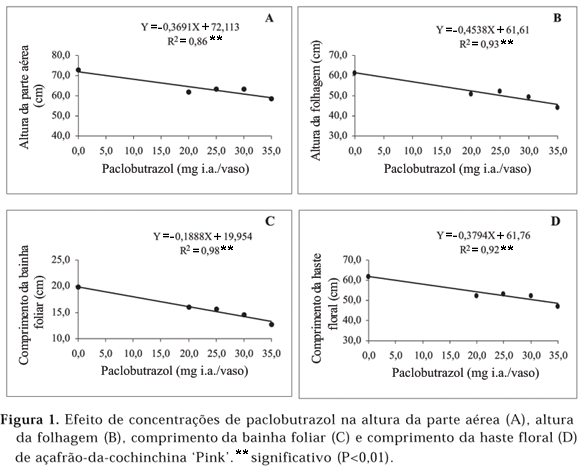The introduction of new products is important for the growth of Brazilian floriculture industry. The thai tulip (Curcuma alismatifolia) has a highly attractive inflorescence and foliage, and great prospect as a flowering potted plant with the aid of growth retardants, which are used to produce compact plants. The effect of growth retardants on `Pink' thai tulip production was evaluated under controlled growing conditions at Holambra, SP. The experimental design was randomized blocks, with three replications and eleven treatments: control, paclobutrazol (20; 25; 30 and 35 mg a.i./pot, applied as a single drench), daminozide sprayed two, three and five times at concentration of 2.125 g L-1 and, a solution of daminozide (1.275 g L-1) plus chlormequat (0.2 g L-1) sprayed two, three and five times. Rhizome was planted in plastic pot (1.0 L) filled with commercial medium and fertilized daily. Paclobutrazol (35 mg a.i./pot) significantly reduced plant and foliage height and flower stem length, without affecting inflorescence length and delaying production cycle. However, plants were not compact enough to meet market quality demand. Foliage height and flower stem length were not significantly affected by others retardants treatments compared with control.
Curcuma alismatifolia; daminozide, paclobutrazol; chlormequat







